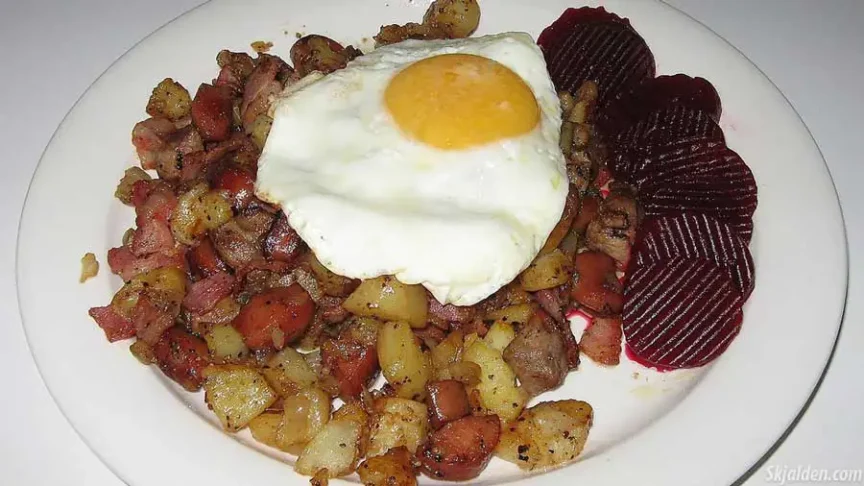Pyttipanna, is a homely dish loved across Scandinavia, but it has different names and slight variations in each country. In Denmark, it’s known as biksemad, while in Norway, they call it pyttipanne. Each name reflects the dish’s essential nature: a simple, yet satisfying mix of chopped ingredients fried together. This universality within the region underscores the shared cultural heritage and culinary practices, despite national borders. For instance, while the Swedish version might include reindeer meat, the Danish biksemad may feature pork, and the Norwegian pyttipanne could have lamb
The Swedish term ‘pyttipanna‘ translates to ‘small pieces in a pan’, which is a direct description of how the dish is prepared. Similarly, ‘biksemad‘ in Danish can be broken down into ‘mixed food’, underscoring the dish’s composition. These straightforward and descriptive names are an example of the practical and no-nonsense approach of Scandinavian cooking.
The saga of pyttipanna is as humble as its ingredients. Originating from a practical need to avoid waste, it turned leftover meats and vegetables into a warm, comforting meal. Traditionally, this dish combines diced potatoes, onions, and any available meats – be it sausage, ham, or meatballs. Ingredients like carrots, peas, or sweetcorn can also be added, enhancing the dish’s taste and color.
The result is a heartwarming meal, often accompanied by pickled beets and a fried egg, mixing different textures and tastes in one dish.
Beyond its convenience and taste, pyttipanna has a slice of Scandinavian history. The dish’s existence dates back to the 19th century, embodying the region’s culinary traditions and resourcefulness.
Interestingly, the Danish version, biksemad, ties back to maritime traditions, likely stemming from sailors’ needs for nutritious, easy-to-prepare foods during long voyages.
This simple dish demonstrates the art of turning leftovers into a delicious meal, reflecting the Scandinavian value of minimizing waste. Try making this dish at home to enjoy a sustainable, flavorful piece of Nordic tradition. And as a bonus, it is a simple step towards both reducing food waste and bringing a touch of Scandinavia to your table.
